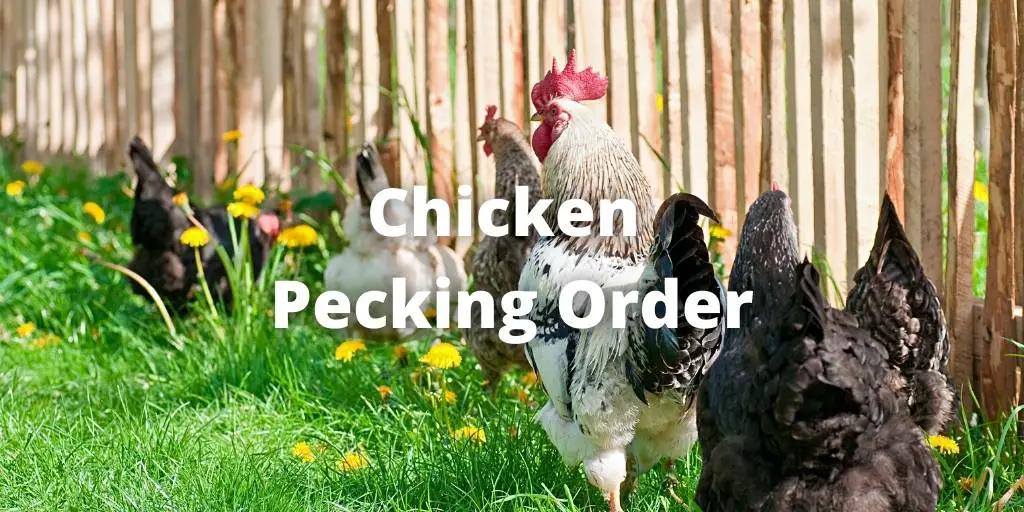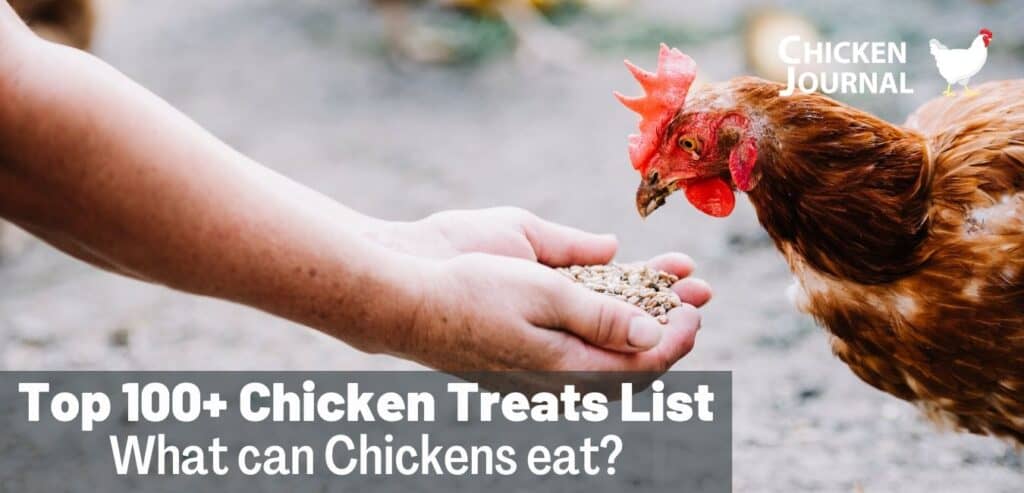Many chicken keepers wonder about the chicken pecking order — the natural ranking system that shapes every flock. Even without spoken words, your birds communicate through body language and pecks to maintain their hierarchy.
In this guide, you’ll learn what the pecking order in chickens means, how it works, and why it matters for your flock’s health and harmony. By the end, you’ll see that it isn’t just random pecking — it’s your birds creating a social system that keeps order inside the coop.
Also read: All about chicken bullying
What Is The Chicken Pecking Order?
The pecking order definition in chickens is simple: it’s a social ranking system that decides which bird eats first, where they roost, and how they interact inside the coop.
The higher a chicken’s rank, the more access it gets to food, water, and prime roosting spots. On the other hand, a chicken at the bottom of the pecking order works harder to secure its share.
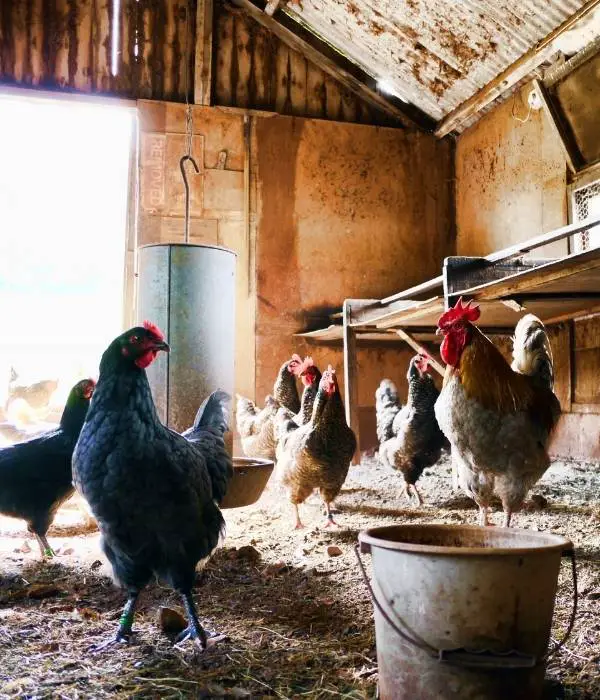
This system may look harsh, but it actually creates balance and reduces constant fighting. Chickens are more intelligent than many people realize, and their ability to establish a pecking order is proof of their natural intelligence.
In your flock, this hierarchy forms through small displays of dominance — a quick chicken peck, wing flap, or chest bump. Over time, each bird finds its place in the group, allowing your flock to function like a tiny society.
While most chickens conform to the system, some need stronger social cues before they settle. For you as a keeper, understanding the chicken hierarchy helps you spot problems early and manage your flock with less stress.
Types Of Chicken Pecking Order Behavior
In every flock, the pecking order among chickens can vary slightly. Here are the four most common types you’ll notice:
1. Rooster to Hen
In small flocks, a single rooster usually leads the hens. He eats first, chooses the best roost, and protects his group. This hen pecking order works smoothly because the hens naturally defer to him, and he, in turn, keeps peace in the flock.
2. Rooster to Rooster
On farms with multiple roosters, a clear hierarchy forms. The strongest alpha chicken takes the top role, while the weaker rooster stays submissive. Instead of endless battles, most roosters recognize the pecking system and avoid challenging the leader. However, if the top bird dies or weakens, the flock may fight until a new leader emerges. Sometimes, a dominant hen will even take over when no strong rooster is present.
3. Hen to Hen
When new hens join a flock, they often trigger fights as the birds re-establish dominance. Hen pecking can be intense, especially in overcrowded coops, and may sometimes result in injuries to birds. Once roles are clear, the aggression usually settles, but you’ll often see “mini hierarchies” among hens within the same group.
4. Hen to Rooster
Usually, hens respect roosters, but if the male is weak or very young, a dominant hen may challenge him. In all-hen flocks, the top hen acts like the leader, enforcing order by pecking chickens that resist. This is less common but shows that even hens can rise to the top of the chicken hierarchy.
Also read: Hen Vs Rooster (Complete guide)
The Importance Of Chicken Pecking Order
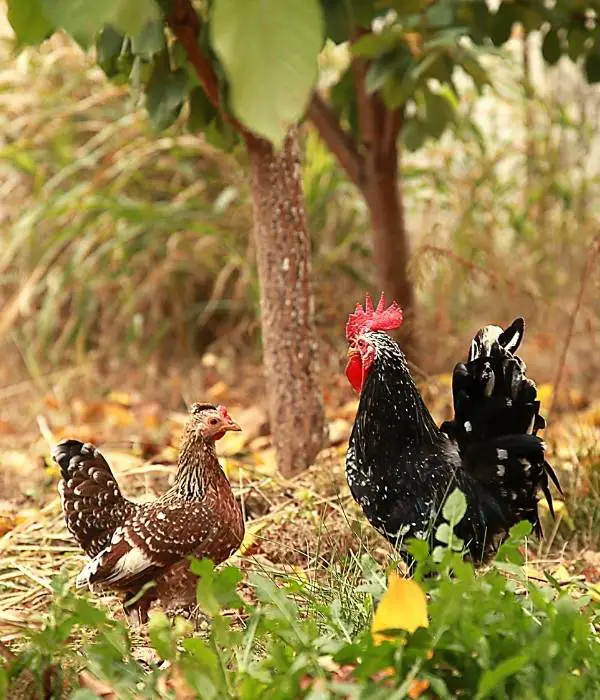
The chicken pecking order may look like bullying at first, but it actually brings balance to the flock. Here’s why it matters:
1. Creates Harmony
Once the pecking order in chickens is established, birds waste less energy on constant fights. The weaker hens or roosters know their place, which reduces tension inside the coop.
2. Encourages Timid Birds
You may notice that even low-ranking birds get a chance to eat when dominant chickens step back. This routine helps shy birds gain confidence, especially if you provide multiple feeders and waterers.
3. Reduces Aggression
Chickens can be surprisingly aggressive, but a clear pecking order prevents endless squabbles. Without it, you’d see more injuries from birds pecking one another to prove dominance.
4. Helps When Adding New Birds
Every time you introduce a new chicken, the flock temporarily resets its pecking system. This process looks rough, but it allows the newcomer to settle into the group without long-term conflict. Slowly introducing new hens alongside the existing flock usually keeps the peace.
5. Organizes Roosting
Even bedtime follows the pecking order. Higher-ranking birds claim the safest, most comfortable roosts, while lower-ranking ones settle around them. You can reduce bullying at night by providing your flock with wider perches and extra space, so timid birds are less likely to get knocked off.
Factors Affecting Chicken Pecking Order
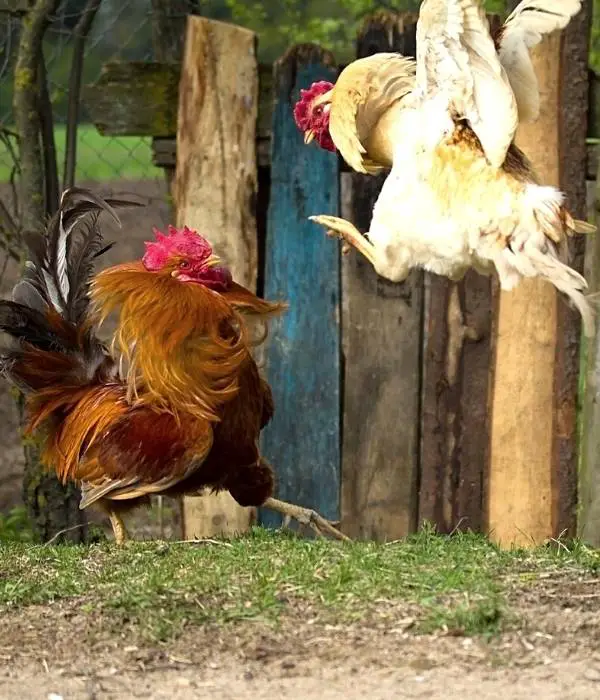
Several factors shape the pecking order in chickens, and as a keeper, you’ll see how each one influences flock behavior:
1. Sex of the Chicken
Roosters usually dominate hens, but new additions change things. A young cockerel may challenge an older rooster, while pullets try to blend into the hen pecking order. The balance shifts until every bird finds its rank.
2. Flock Size
In small flocks (under 10 birds), the hierarchy is simple. In larger groups, competition increases. Lower-ranking birds may delay eating or drinking until they feel safe, which is why providing extra feeders prevents bullying.
3. Age of the Birds
Older hens and roosters typically rank higher because of their experience. As younger birds mature, they slowly ascend the chicken hierarchy, learning essential survival skills such as foraging and predator awareness.
4. Temperament and Behavior
Aggressive chickens often rise quickly in the hierarchy — but not always. Sometimes, overly aggressive birds attract retaliation. On the other hand, calm breeds can live together peacefully with fewer pecking problems.
5. Number of Roosters
Too many roosters create nonstop fights. A single strong rooster keeps order, while multiple males compete. An odd number of roosters can sometimes reduce conflict, but in backyard setups, fewer roosters usually means a calmer coop.
6. Breed Differences
Some breeds are naturally assertive. For instance, game breeds often dominate docile breeds, such as Silkies. When mixing breeds, expect more tension as aggressive birds assert dominance.
7. Health of the Chickens
Healthy, active birds almost always rank higher than those that are weak or sick. If you notice a bird slipping in rank, check for illness or parasites. A strong flock makes for a more stable pecking system.
8. Time of Day
Chickens are most social during daylight when they free range, scratch, and compete for food. At night, they prefer safety and comfort, with higher-ranked birds taking the best roosting spots while others settle around them.
Common Pecking Order Problems
While the pecking order in chickens has benefits, it can also create problems for your flock. Here are the most common issues to watch for:
1. Drop in Egg Production
If a hen is constantly bullied, she may stop laying. Stress interferes with egg-laying hormones, especially in smaller or weaker hens. Giving timid hens safe nesting areas helps prevent this.
2. Bullying New Birds
New additions to the flock often face harsh treatment as they find their place in the chicken hierarchy. During this period, they may avoid eating and drinking, which can lead to poor health because of bullying. Slow introductions are key to reducing this issue.
3. Injuries and Cannibalism
Some birds take dominance too far. Aggressive pecking chickens can cause bleeding, bruises, or even broken bones in weaker flock members. In extreme cases, this escalates to cannibalism. Always separate badly injured or bleeding birds to stop further attacks.
4. Growth and Weight Issues
When low-ranking chickens are restricted from feed, they may not reach proper body weight. This is especially noticeable in breeds like Cornish Cross, where growth is rapid. Ensure multiple feeders so every bird gets access to food.
5. Stress and Immune Suppression
Constant squabbles raise stress levels in the flock. High stress weakens immunity, making chickens more vulnerable to parasites, respiratory illness, and other diseases. Long-term stress can even cause early death in severely bullied birds.
Also read: Chickens Pecking Each Other To Death
How To Avoid The Chicken Pecking Order Problems?
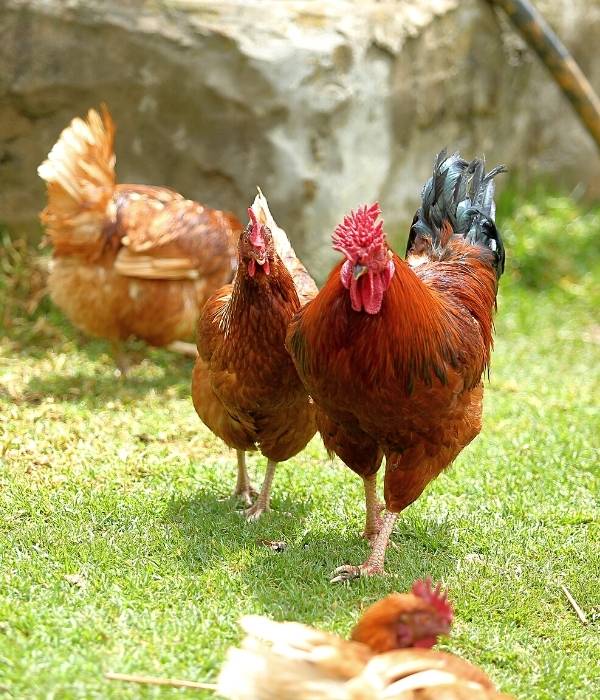
While you can’t eliminate the chicken pecking order, you can manage it so it doesn’t turn into harmful bullying. Here are the best ways to reduce problems in your flock:
1. Give Enough Space
Overcrowding is the top cause of aggression. Each bird needs room to move, eat, and dust bathe. More space means less fighting and fewer injured pecked chickens.
2. Improve Coop Safety
A cramped coop encourages bullying. Provide separate nesting boxes so hens don’t feel forced to compete. Safe, spacious housing helps weaker birds avoid constant harassment.
3. Provide Individual Roosting Spots
Roosting is part of the pecking system, and dominant chickens always grab the best perches. Prevent fights at night by installing wide roosts and giving extra space so timid birds don’t get knocked off.
4. Add Extra Feeders and Waterers
Lower-ranking chickens often avoid the main feeder. By placing multiple food and water stations around the coop, you ensure every bird gets its fair share.
5. Prevent Boredom with Enrichment
Chickens peck more aggressively when bored. Offer toys, hanging cabbages, or access to dust baths. A busy chicken spends less time picking fights.
6. Introduce New Birds Slowly
When adding a new hen or rooster, let them see the flock from a safe enclosure before full integration. This prevents sudden attacks and gives them time to adjust to the chicken hierarchy.
7. Stop Mob Bullying Quickly
If you see one chicken being ganged up on, separate it until the flock calms down. This avoids serious injuries and long-term trauma.
8. Keep the Flock Healthy
Strong, healthy birds naturally hold their place better in the pecking order in chickens. Provide balanced feed, clean water, and supplements like vitamins and minerals to support weaker hens. Healthy flocks are more stable and less prone to aggression.
FAQs
Q. When do chickens start the pecking order?
A. Chicks begin forming a pecking order as early as three days old. Within two weeks, you’ll notice minor signs, such as chest bumping, wing flapping, and light pecks, as they figure out who ranks higher in the group.
Q. How do chickens establish the pecking order?
A. Chickens use body language, pecks, and displays of dominance to set rank. A dominant bird may peck at another to show its power, while a submissive chicken lowers its head, moves away, or makes itself appear smaller. Over time, these interactions create a stable chicken hierarchy.
Q. Why are my hens pecking each other?
A. Hens often peck one another to reinforce their rank. However, excessive hen pecking can be triggered by overcrowding, lack of food or water, or boredom. Providing space, extra feeders, and enrichment helps stop unnecessary aggression.
Q. How can I stop chickens pecking each other to death?
A. Severe chickens pecking each other can lead to injuries or death. If you see blood, separate the injured bird immediately. Use blue wound spray to hide injuries and prevent more pecking. Check for stress factors like crowding or poor nutrition and fix them quickly.
Q. What is the meaning of pecking order in chickens?
A. The pecking order, meaning in poultry, is simple: it’s the social ranking that determines which bird eats, drinks, or roosts first. The system prevents constant fighting by giving every chicken a clear position.
Q. What does a chicken pecking order chart look like?
A. In a typical flock, the top rooster or dominant hen sits at the top of the chart. Middle-ranking birds follow, and at the very bottom is the timid or weaker henpecked chicken. Your flock may shift ranks when new birds are added.
Q. What is a group of chickens called?
A. A group of chickens is called a flock. Within that flock, the pecking order determines how they interact with each other on a daily basis. Some keepers jokingly refer to it as “coop politics.”
Q. Do roosters always stay at the top of the pecking order?
A. Not always. While roosters are usually dominant, a firm or assertive hen can take charge if the rooster is weak, young, or absent. In all-hen flocks, the lead hen naturally becomes the alpha chicken.
Conclusion
The chicken pecking order may look harsh, but it’s a natural and necessary part of every flock. By understanding how the pecking order in chickens works, you can manage your birds with less stress and prevent unnecessary injuries.
Remember, you can’t stop the pecking system entirely — and you shouldn’t. Instead, your role as a keeper is to create the right environment: enough space, balanced feed, safe roosts, and slow introductions for new birds. When you provide your flock with comfort and structure, even the lowest-ranking henpecked chicken can live in peace.
At the end of the day, the pecking order’s meaning is simple: it’s your chickens’ way of deciding “who’s in charge.” Accepting and supporting this natural hierarchy is the key to keeping a calm, productive, and happy flock.
